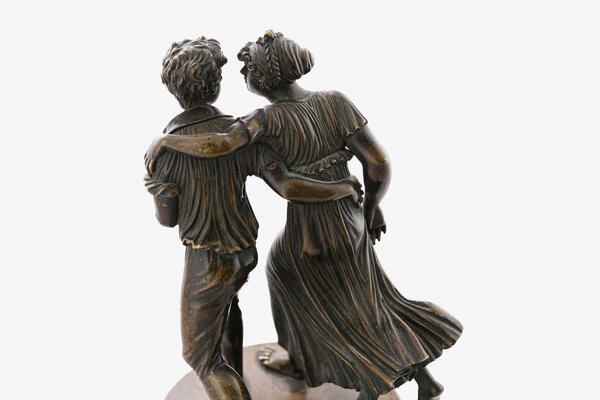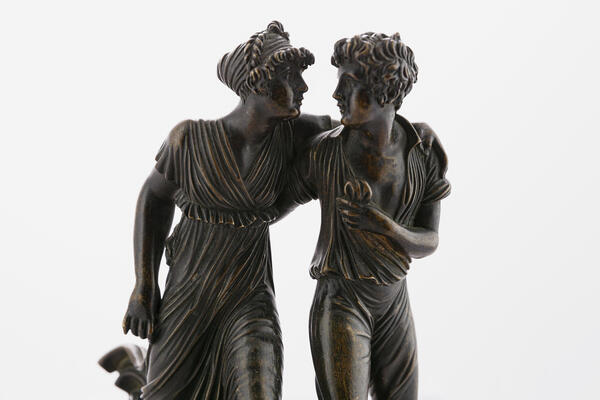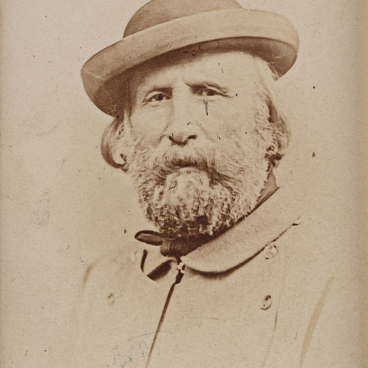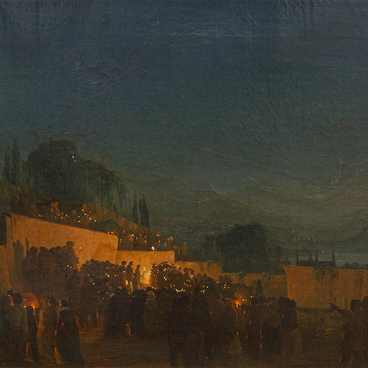Paul and Virginia. A group of sculptures
Время создания
the first half of the 19th century
Место создания
France
Размер
35,5x15x13,5 cm
Техника
bronze; casting, stamping, patinating
Выставка
0
Открыть в приложении#1
This sculptural group belonged to the family of Yegor Ivanovich Herzen, the writer’s paternal half-brother. A cylindrical pedestal holds Paul and Virginia, two characters from the eponymous novel by Jacques-Henri Bernardin de Saint-Pierre, walking and embracing. The pedestal is decorated with a relief image of a palm tree.
The story about the tragic love between two children was first published in 1788 as part of Saint-Pierre’s philosophical treatise “Studies of Nature”. The work is considered a vivid example of sentimentalism in literature. The story enjoyed great popularity in 19th-century Russia, as it did in other European countries of that time. In 1793, it was printed on the pages of the magazine “Reading for Taste, Reason, and Sense”, and then published in a separate edition by the Moscow University Printing House. The book had a significant impact on Russian readers.
As the researcher Anna Belova points out, “Provincial sisters from noble families of the first half of the 19th century, who lived in a rural estate, brought up their children together and instilled in them the importance of maintaining strong familial bonds from childhood, could find some ideas of French sentimentalism interesting, including those reflected in the novel by Bernardin de Saint-Pierre, namely the quiet rural idyll, life in the lap of nature away from ‘civilization’ and society, and that special influence a mother has on her child’s personality, humanity and commitment to virtue.”
In the early 19th century, it was fashionable to name children after the main characters. A monument was even erected in honor of the characters of the story on the island of Mauritius, and commemorative coins and stamps were issued. The story inspired many artists to create paintings and sculptures.
The poet Konstantin Batyushkov described his impression of the book,
#2
In 1814, when I was in Paris, I was staying at Damas’ and fell ill. I asked to bring me books from the nearest library. They brought ‘Paul et Virginie’, and I read it several times, I read and shed tears, and what tears those were! The most pleasant, purest ones! After the noise of the war, the cannon balls and thunder, the terrible spectacle of destruction and, finally, all the luxury and charm of the new Babylon, which I had already tasted to the point of disgust, reading this book lightened my heart and reconciled me to the world.
#4
1 / 3
Paul and Virginia. A group of sculptures
#3
Ministry of Culture of the Russian Federation
читать дальшескрыть
00:00
00:00
1x
Paul and Virginia. A group of sculptures
Время создания
the first half of the 19th century
Место создания
France
Размер
35,5x15x13,5 cm
Техника
bronze; casting, stamping, patinating
Выставка
0
Открыть в приложении
Поделиться





